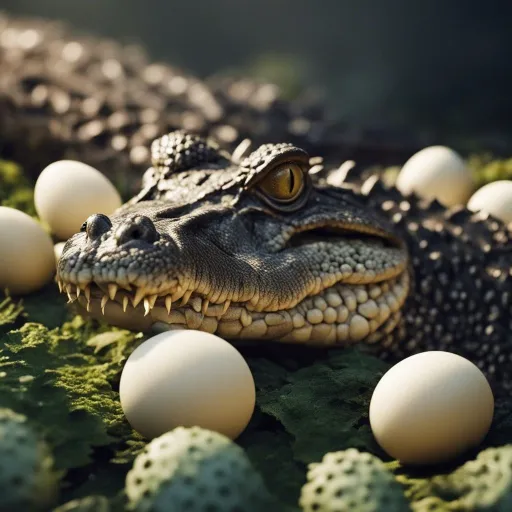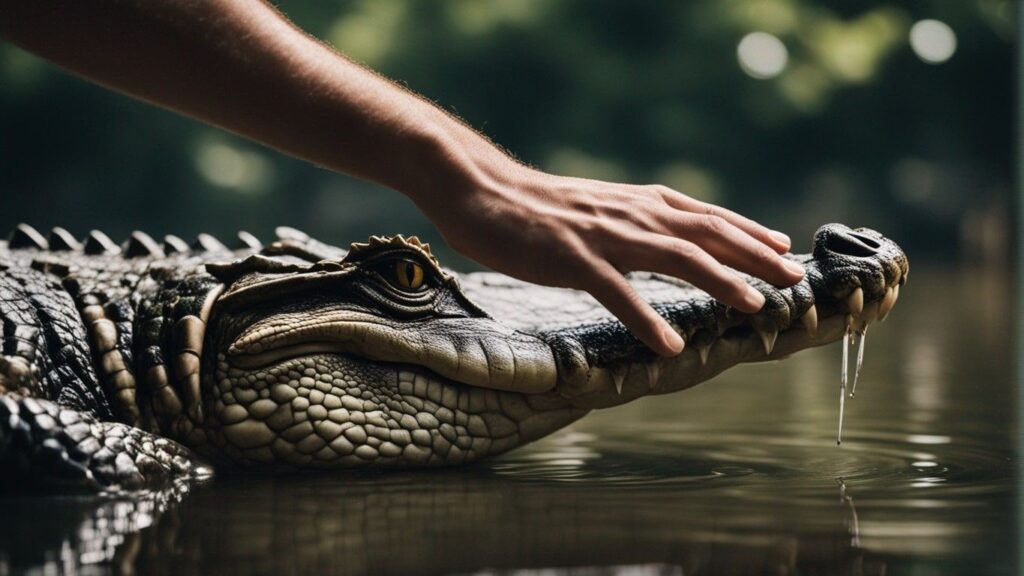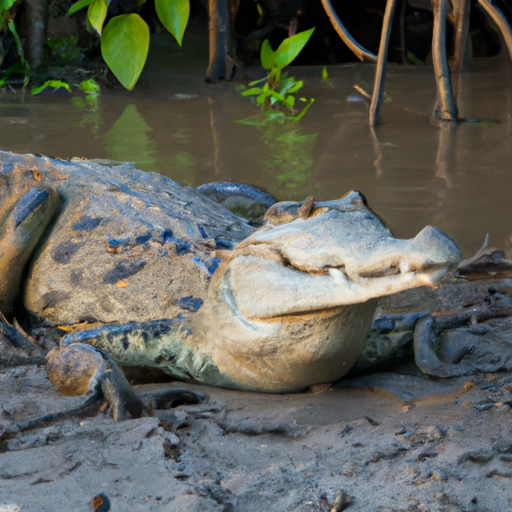Have you ever wondered about the fascinating world of crocodiles? In this article, we will explore the curious question of how many eggs a crocodile lays.
Get ready to discover some surprising facts about these incredible reptiles and their remarkable reproduction habits.
From their ancient lineage to their strategic incubation methods, prepare to be amazed by the incredible world of crocodile eggs.

Crocodile Reproduction
Crocodiles, known for their impressive size and strength, have a fascinating reproductive process.
Understanding their mating behavior and nesting habits is crucial to preserving their populations and ensuring their survival.
Mating Behavior
Crocodile mating behavior is quite unique and varies among different species. Typically, male crocodiles compete vigorously for the attention of females during the breeding season.
They engage in elaborate courtship displays, which include splashing water, slapping their jaws, and making deep grunting sounds.
Once a male successfully court a female, they engage in a mating ritual that involves intertwining their bodies and vocalizing.
This ritual establishes the breeding pair’s bond and is an important step in the reproductive process.
Nesting Habits
After mating, the female crocodile selects a suitable nesting site to lay her eggs. These nests are often constructed near water bodies such as rivers or lakes, as crocodiles rely on water for their survival.
The choice of nesting site is influenced by various factors, including the availability of suitable substrate, temperature regulation, and protection from predators.
Factors Influencing Egg Production
The number of eggs a crocodile can produce is influenced by several key factors, including species differences, the size and age of the crocodile, and environmental conditions.
Species Differences
Different crocodile species exhibit varying reproductive strategies, resulting in variations in clutch sizes.
For example, the Nile crocodile (Crocodylus niloticus) typically lays a larger number of eggs compared to the Australian saltwater crocodile (Crocodylus porosus).
This variation is attributed to the differences in ecological and environmental conditions in their respective habitats.
Size and Age of the Crocodile
The size and age of a crocodile also play a significant role in egg production. Generally, larger and older females have the capacity to produce more eggs than their smaller and younger counterparts.
This is because they have more reproductive experience and have reached their optimum reproductive potential.
Environmental Conditions
Environmental factors, such as temperature and food availability, can greatly affect a female crocodile’s ability to produce eggs.
Adequate temperature conditions are crucial for successful embryonic development, while an abundance of food resources ensures the female’s overall reproductive health.
Changes in environmental conditions, such as habitat degradation or climate change, can have detrimental effects on crocodile populations and their ability to produce viable eggs.

Typical Egg Laying Patterns
Understanding the frequency and timing of egg laying, as well as clutch size, provides valuable insights into crocodile reproductive behavior and population dynamics.
Frequency and Timing
Crocodiles typically lay eggs once a year, although some species may lay eggs less frequently. The exact timing of egg laying varies among species and is often influenced by seasonal changes, climate, and geographic location.
For example, in tropical regions, where the climate remains relatively stable throughout the year, crocodile nests can be found year-round.
In contrast, in temperate regions, egg laying may be limited to specific times of the year, coinciding with the warmer months.
Clutch Size
The clutch size refers to the number of eggs laid by a female crocodile in a single nesting event. It can vary significantly depending on the species and the reproductive condition of the female.
On average, crocodile clutch sizes range from 20 to 80 eggs, with some species, like the Nile crocodile, capable of laying up to 90 eggs in one clutch.
The large clutch sizes are believed to be an adaptation to offset the high mortality rates faced by crocodile hatchlings due to predation.
Nest Construction and Incubation
Crocodiles exhibit remarkable nest-building behaviors and have specific requirements for successful egg incubation.
Selection of Nesting Site
Female crocodiles carefully select nesting sites that provide optimal conditions for egg incubation.
They typically choose sites with suitable substrate, such as sandy or muddy areas, where the eggs can be buried to provide protection and maintain proper temperature and moisture levels.
The proximity to water sources is also crucial, ensuring easy access for the female and eventually the hatchlings.
Construction of Nest
Once the nesting site is selected, the female crocodile proceeds to construct the nest. Using her powerful hind limbs, she excavates a hole in the ground, shaping it to accommodate the clutch.
The female then carefully places the eggs in the nest, covering them with the surrounding substrate.
This process helps insulate the eggs, maintain the necessary humidity, and protect them from predators and environmental fluctuations.
Incubation Period
The incubation period of crocodile eggs varies depending on the species and environmental conditions.
On average, it ranges from 80 to 90 days, although some species may have shorter or longer incubation periods.
Throughout this period, the female monitors the nest and adjusts her behavior to ensure optimal conditions for the development of the embryos.
Incubation temperature plays a crucial role in determining the sex of the hatchlings, with higher temperatures resulting in more males and lower temperatures favoring females.
Challenges to Egg Survival
Crocodile eggs face numerous challenges that threaten their survival, including natural predators and human impact.
Natural Predators
Eggs laid by crocodiles are highly vulnerable to a variety of predators. Some of the most common natural predators include monitor lizards, birds, and other reptiles.
These predators often recognize crocodile nests based on scent, visual cues, or previous knowledge of nesting areas.
They meticulously search for and raid the nests, devouring the eggs or consuming the hatchlings shortly after hatching.
Human Impact
Human activities, including habitat destruction, pollution, and egg collection, pose significant threats to the survival of crocodile eggs.
Habitat destruction reduces nesting sites and disrupts the natural breeding patterns, while pollution can affect the eggs’ development and cause reproductive abnormalities.
Additionally, the collection of crocodile eggs for commercial purposes or traditional practices can lead to a decline in local populations and disrupt the delicate balance of crocodile ecosystems.
Final Thoughts
In conclusion, crocodile reproduction is a complex process influenced by various factors such as mating behavior, nesting habits, environmental conditions, and human impact.
Understanding these aspects is essential for conservation efforts aimed at protecting these remarkable creatures and ensuring the continued survival of crocodile populations worldwide.
By addressing the challenges to egg survival and implementing conservation measures, we can help safeguard the future of these magnificent reptiles for generations to come.



